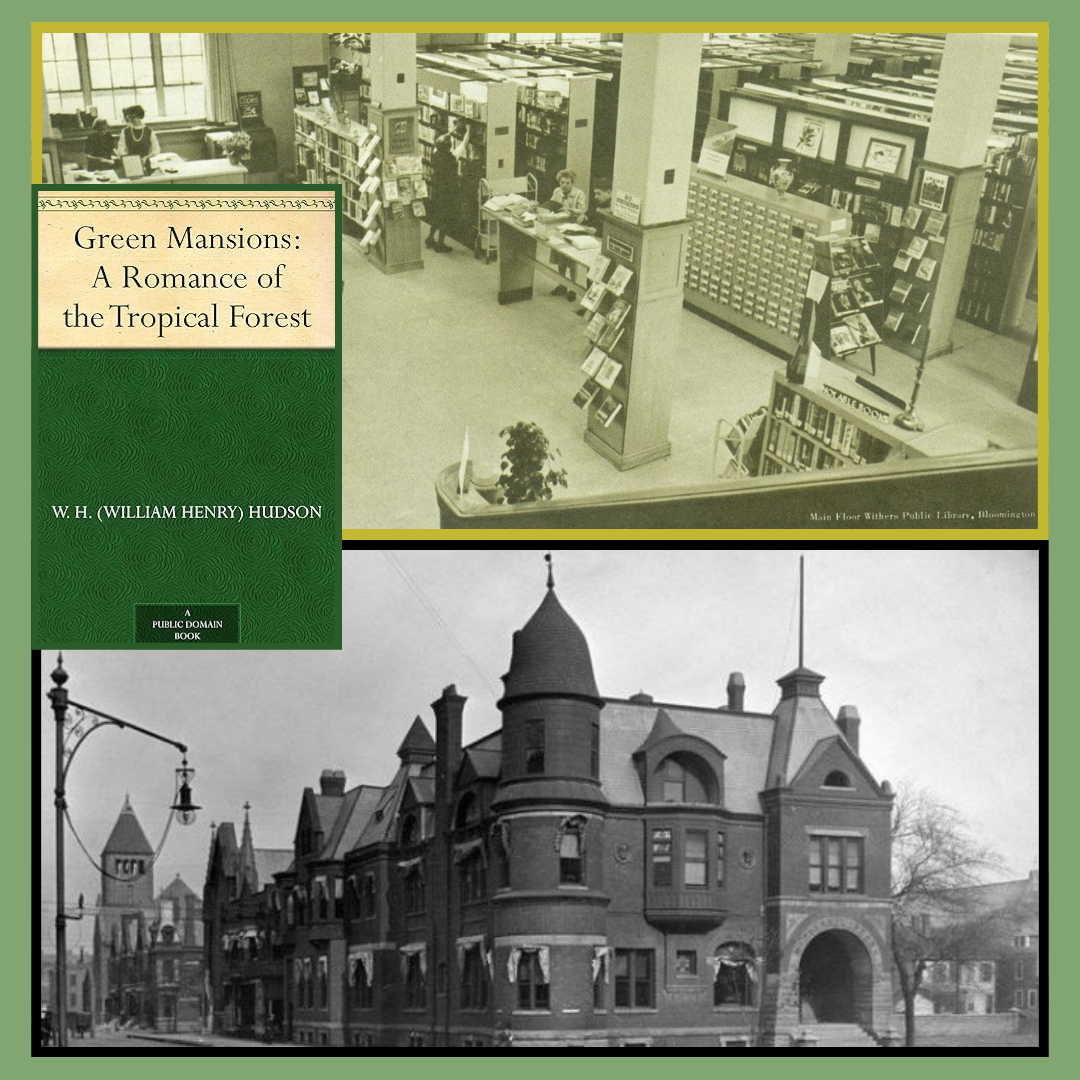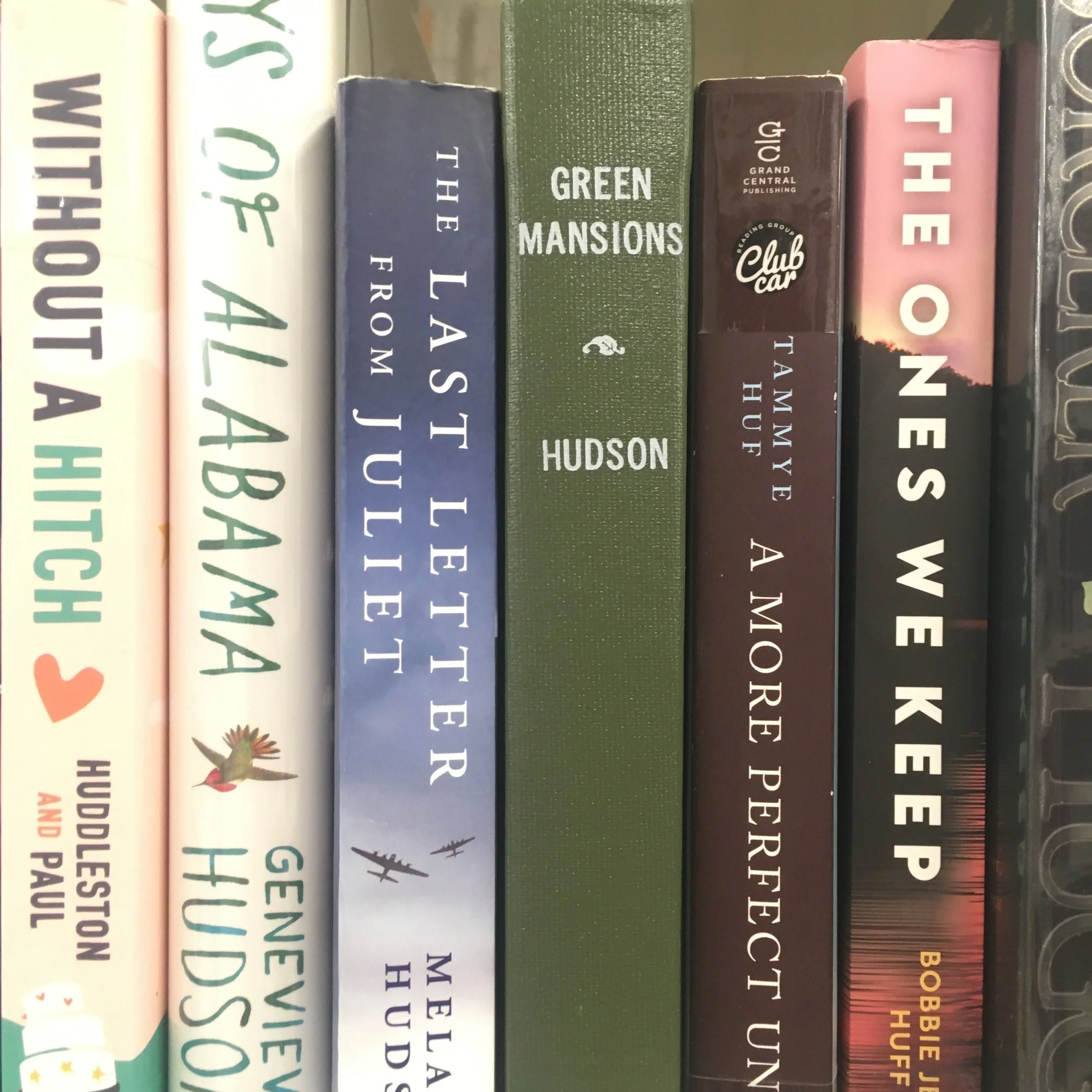Memory: Finding nature novels in the library
The interior of Bloomington, Illinois’ old Withers Library in the 1960s, and below, the original exterior of the 1887 building. Sadly, the building was razed in the 1970s. Inset, the cover of Green Mansions by W.H. Hudson.
The memory of finding Green Mansions: A Romance of the Tropical Forest in my public library is one of the reasons I founded the Nature Book Guide. When I was a young teen, I spotted this old green hardback on the "H” shelf of the fiction section of the stacks. (I remember exactly where it was located—if you walk down the aisle on the right side of the photo above, THAT’S where it sat on the shelf.)
Green Mansions was unlike any other book I’d read before. Wikipedia calls it “an exotic romance by William Henry Hudson about a traveler to the Guyana jungle of southeastern Venezuela and his encounter with a forest-dwelling girl named Rima.” Normally gravitating to nonfiction at the time, I was surprised by the wild fantasy adventure.
It was the first nature novel I’d found. And I loved it. And I realized it was merely by chance that I’d discovered it. I wondered, “How would I ever find another book like THIS?”
How would I find another book like THIS…
When faced with shelf upon shelf of fiction—how can I find another novel set in a dense forest?
When faced with shelf upon shelf of biographies—how can I find a memoir about outdoor adventure or scientific inquiry in the stacks?
When faced with shelf upon shelf of poetry —how can I find more books with nature poems?
This is one of the reasons I wanted to start Nature Book Guide.
Where Green Mansions sits in the stacks today.
When I was young, I spent many Saturdays at the library where my mother was a reference librarian. She worked upstairs from the main stacks, surrounded by microfilm machines, rows of city directories, area newspapers on long spindly wooden sticks (if you know, you know), and the area’s archives. She’d taught me the best practices of the day for reading fragile documents—donning white cotton gloves and careful handling—and given me free rein in the old files in the back, which included 100-year-old leather-bound newspapers and all sorts of Lincoln-era artifacts. (Our town was a critical stop on Abraham Lincoln’s route when he was a frontier circuit-riding attorney).
When I was bored, I’d roam through the entire building, the children’s department in the basement, the “gallery” on the second floor. I’d read comics from the 1920s and 1930s on microfilm and when available, on the old newsprint. And I’d nap in the staff lounge. (That room is visible in the bottom photo—second floor, window to the left.) When I got hungry, I would walk two blocks to the downtown Woolworths for a tuna sandwich and orange drink at the lunch counter. Sometimes I’d be at the library the entire day, other Saturdays I’d take the public bus home.
These are glorious memories. Sadly, the old Withers Library was razed in the 1970s to make way for a new public library a few blocks away. That library is staffed with dedicated librarians who are always there to answer questions like, “How would I find another book like THIS?” The collection is more robust than ever. I’m grateful for it. Still, I miss the old book smell of Withers.
An aside: Green Mansions inspired what appears to be a perfectly dreadful Hollywood movie in 1959, starring Audrey Hepburn and Anthony Perkins. Even the promo seems to showcase all the worst of Hollywood’s depictions of women, “romance,” other cultures, and “uncivilized” places. (Turner Classic Movie intro here.)
When I retired from Denver’s Sand Creek Regional Greenway Partnership I moved to my hometown. To my utmost delight this morning, I discovered the same volume of Green Mansions that I’d discovered in the early 1970s.
See the faint pencil ‘45 in the book’s envelope? The online card catalog indicates this book is a 1944 edition. It may be the very book I picked up in the early 70s, though it has probably been rebound since then.
You can download a copy of Green Mansions, free of charge and copyright, from Project Gutenberg.



